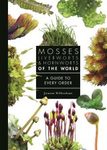![Creatures of Cain Creatures of Cain]()
Click to have a closer look
About this book
Customer reviews
Biography
Related titles
About this book
After World War II, the question of how to define a universal human nature took on new urgency. Creatures of Cain charts the rise and precipitous fall in Cold War America of a theory that attributed man's evolutionary success to his unique capacity for murder.
Drawing on a wealth of archival materials and in-depth interviews, Erika Lorraine Milam reveals how the scientists who advanced this "killer ape" theory capitalized on an expanding postwar market in intellectual paperbacks and widespread faith in the power of science to solve humanity's problems, even to answer the most fundamental questions of human identity. The killer ape theory spread quickly from colloquial science publications to late-night television, classrooms, political debates, and Hollywood films. Behind the scenes, however, scientists were sharply divided, their disagreements centering squarely on questions of race and gender. Then, in the 1970s, the theory unraveled altogether when primatologists discovered that chimpanzees also kill members of their own species. While the discovery brought an end to definitions of human exceptionalism delineated by violence, Milam shows how some evolutionists began to argue for a shared chimpanzee-human history of aggression even as other scientists discredited such theories as sloppy popularizations.
A wide-ranging account of a compelling episode in American science, Creatures of Cain argues that the legacy of the killer ape persists today in the conviction that science can resolve the essential dilemmas of human nature.
Customer Reviews
Biography
Erika Lorraine Milam is professor of history at Princeton University. She is the author of Looking for a Few Good Males: Female Choice in Evolutionary Biology.
By: Erika Lorraine Milam(Author)
408 pages, 33 b/w illustrations
– Winner of the Suzanne J. Levinson Prize, History of Science Society
– Shortlisted for the Pickstone Prize, British Society for the History of Science
"A multifaced and original discussion of the curious life of the 'killer ape' theory within American culture."
– Marcia Holmes, Times Higher Education
"Coupling her study with research shifting from humankind's inclination for violence to their more destructive treatment of the environment will reveal that those same factors will continue to remain progressive."
– G. Donato, Choice Reviews
"[A] fascinating and very well-documented account of disputes about human nature [...] A major work like Creatures of Cain: The Hunt for Human Nature in Cold War America informs and intrigues, it raises questions, and points to avenues of more research. [Erika] Milam is to be congratulated."
– Michael Ruse, The Quarterly Review of Biology
"Milam's book [...] is deeply researched as well as lucidly written [...] Historians will find much to reward them in Creatures of Cain [...] Historians broadly interested in the social and political landscapes of mid-century U.S. intellectual life will value Milam's book for its deft interweaving of science, public intellectualism, and American social and political anxieties"
– Joy Rohde, American Historical Review
"Milam has made a significant and innovative contribution to the historiography of anthropology [...] A novel perspective on anthropology's impact and influence."
– Robert Hancock, Journal of the Royal Anthropological Institute
"A tour de force, a historical study that offers a well-researched, meticulous examination of how a diverse community of scientists debated the meaning of human nature in the United States after World War II."
– Michal Shapira, Isis
"Creatures of Cain brings to light the ways in which the circulation of knowledge actually took place."
– Marianne Sommer, Journal of the History of Biology
"Erika Lorraine Milam's Creatures of Cain is an exemplary work in the cultural history of modern science. The research is thorough, the material fascinating, the writing lucid and, at times, gripping."
– Alex Aylward, Birkhauser (N.T.M)
"Creatures of Cain is likely to become a classic in history of science studies. The work is beautifully written and has layers of rich detail, much of which could be mined for gaining insights on contemporary debates."
– Roger Chapman, Cercles















![Die Vogel-WG: Die Heinroths, ihre 1000 Vögel und die Anfänge der Verhaltensforschung [The Bird Wohngemeinschaft: The Heinroths, Their 1000 Birds and the Beginnings of Behavioral Research]](http://mediacdn.nhbs.com/jackets/jackets_resizer_medium/26/267983.jpg?height=150&width=107)



















